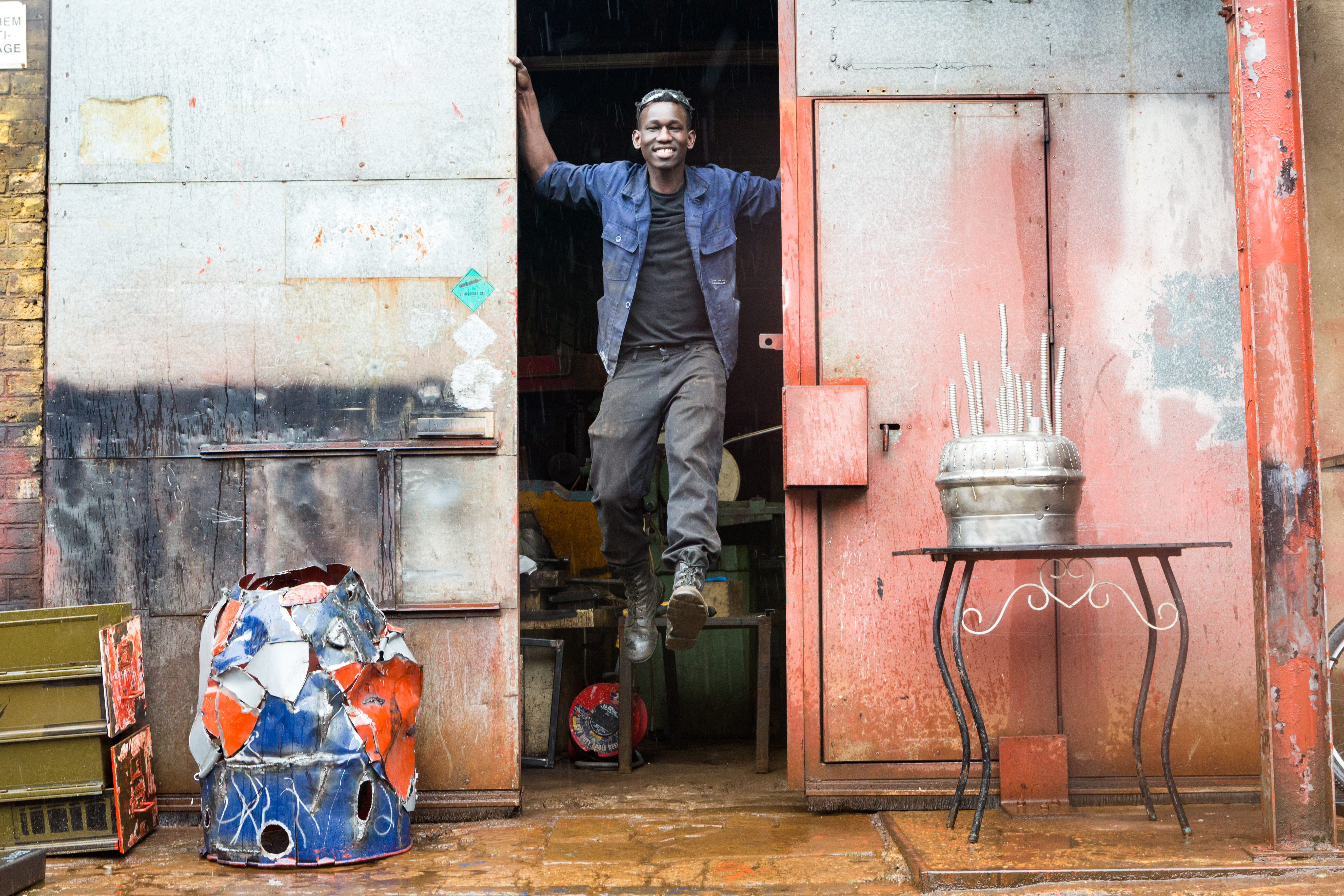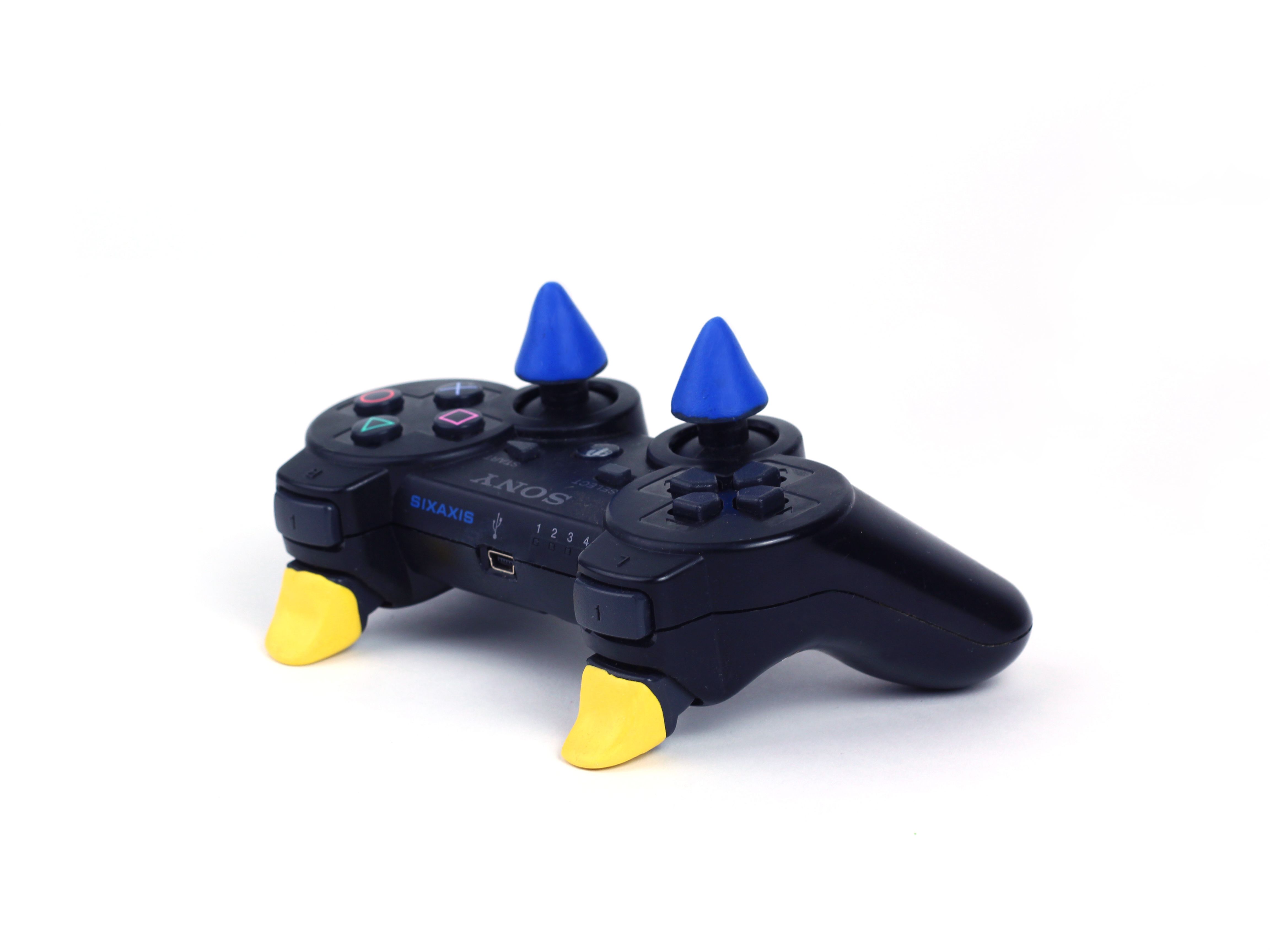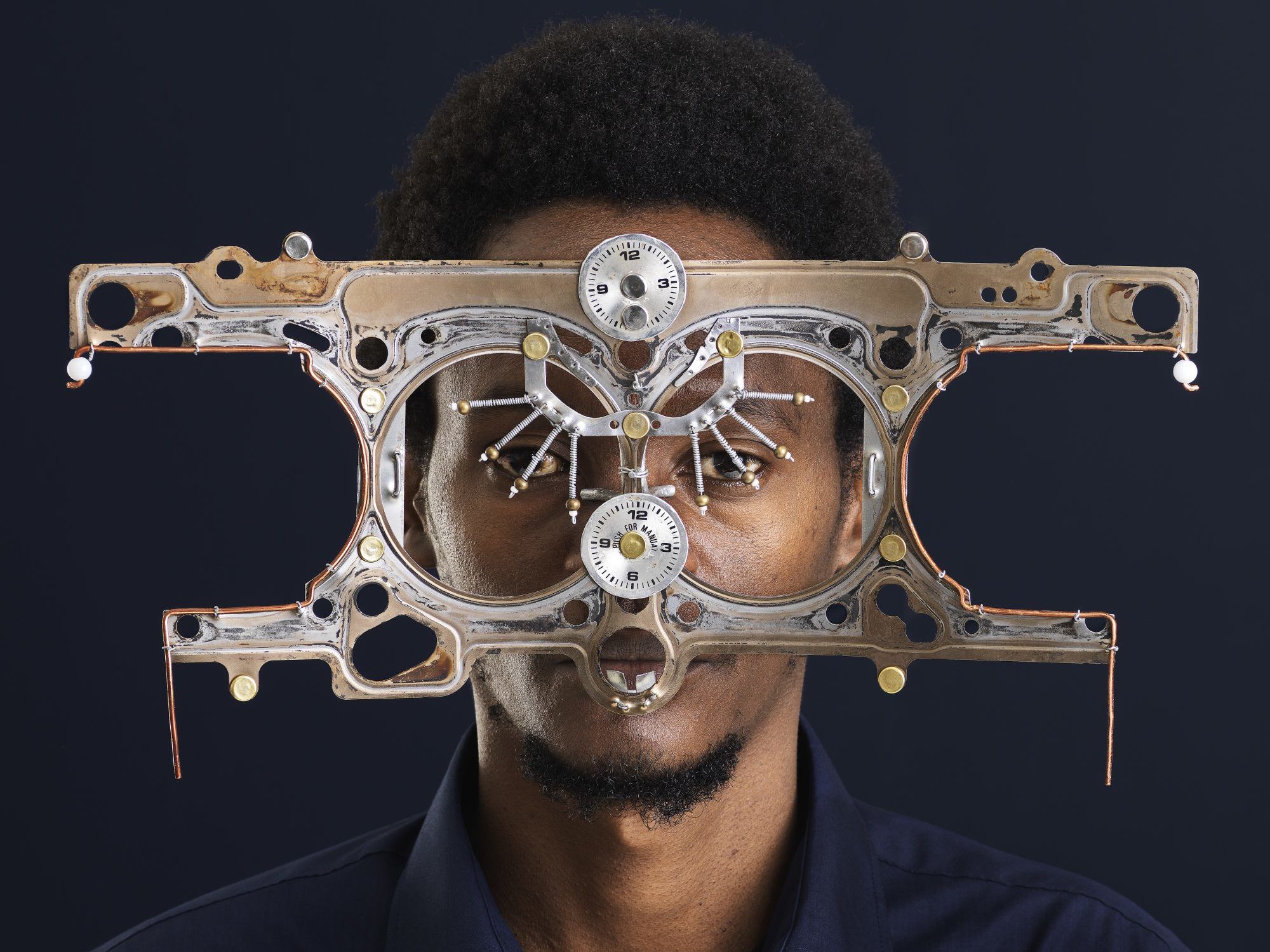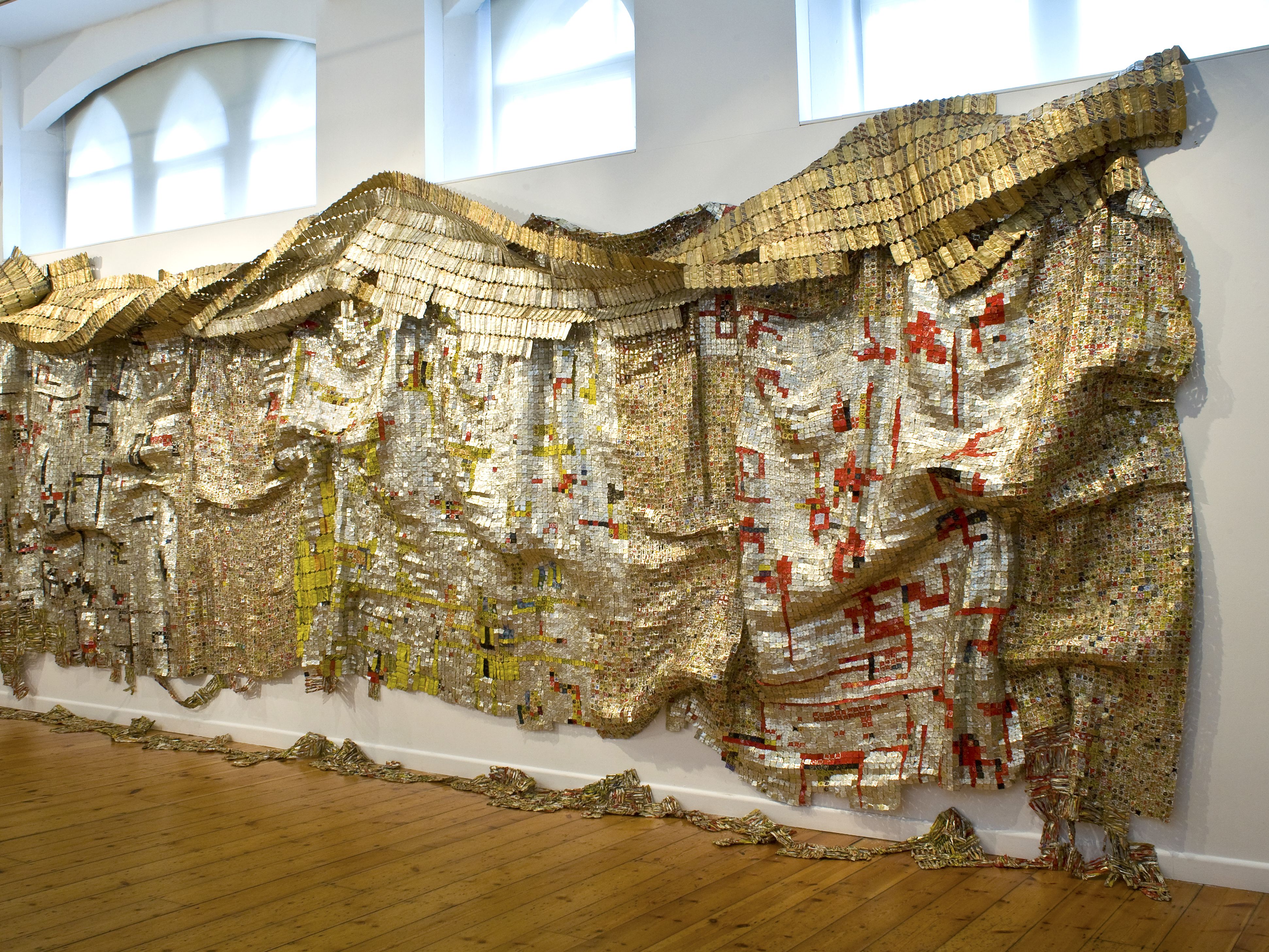About me
Tell us about yourself
I grew up in Sussex, am originally from Africa, Uganda but I came to Camberwell College of Arts to study 3D design. Nowadays I’m becoming more aware that I should have been doing sculpture, but sometimes you know it’s quite nice – I enjoy both sides – sculpture and design.
It’s hard to describe myself, normally I just say I’m a metal sculptor, because you don’t hear of a lot of metal workers these days. I think it’s working with the material really, letting the material speak, that’s what I enjoy.

Did you know right away what type of creative you wanted to become?
I didn’t always know that I would come down this path of art and design. I think doing art during GCSEs and the art teacher being really helpful, just letting me express myself or do what I wanted to do, this really helped to direct me. Then beginning to try different materials and processes – painting, drawing and onto physically building stuff – that’s where it started off for me, being asked to make something from scratch.
During one of the lessons we were looking at Alexander Calder and the continuous line and sculptures. We were all given a piece of wire and a picture and we had to recreate it. Whilst others struggled because it was tricky working with wire, I for some reason didn’t struggle with it, I just knocked it out! It was a good feeling as well. To realise that you didn’t have to struggle, it just came naturally.
I think it’s something to do with working with my hands. Growing up in Africa, and we weren’t really given toys, you know here’s a lego brick, play around with it. You had to make your own lego bricks, so there’s something about making something physically, it was like I’ve done this before.
What’s the biggest truth or myth?
Biggest myth is everyone thinks it’s about software, sitting on the computer, learning how to draw.
You choose a material you’re comfortable with or not comfortable with and realise what you can do with it’s possibilities.
Challenges are the workshops – they’re not open in the evenings and weekends. I got a space in Brixton but it wasn’t right, but I kept looking and ended up here in this space in Lewisham.

What do you think makes you a good creative?
Having an awareness of your day-to-day surrounding, feeding off it and using it as inspiration to create new work or to use it as a starting point for a new body of work. I think because we’re always asked at the beginning of a project – to find an image or something, have a reference point. But I feel that we have so much that we have experienced or encountered. Sometimes I think if we could use this then do our research to see what other people have said on that topic, then we would be able to become good creatives.
And also, I guess being in contact with other creatives. I think in terms of collaborating, it’s different to working in groups on a project in school or university. When you’re actually collaborating I find you’re working with somebody you like or get along with and you both want to push each others’ practice (particular creative work) so I think collaborating is good. If you’re able to do it, some people don’t like to work with others.
When you both have a space to work in and you’re both comfortable it takes off the pressure, it’s relaxed and we can fully express ourselves. When I show them around I usually say, the space is our canvas and let’s take it from there.
Any top tips for surviving uni?
Respecting everyone really – the staff, the maintenance guys, because in times when you least expect it that’s when you need them most. Just exploring your campus – what’s available because there’s more that you think than if you just keep going to your studio. Go in every day if you can because that will help you to familiarise yourself with your environment then second year you’re ready to go. And use the library!
Update: Since our interview, BA (Hons) 3D Design has become BA (Hons) Product and Furniture Design and is now based at Chelsea College of Art.




